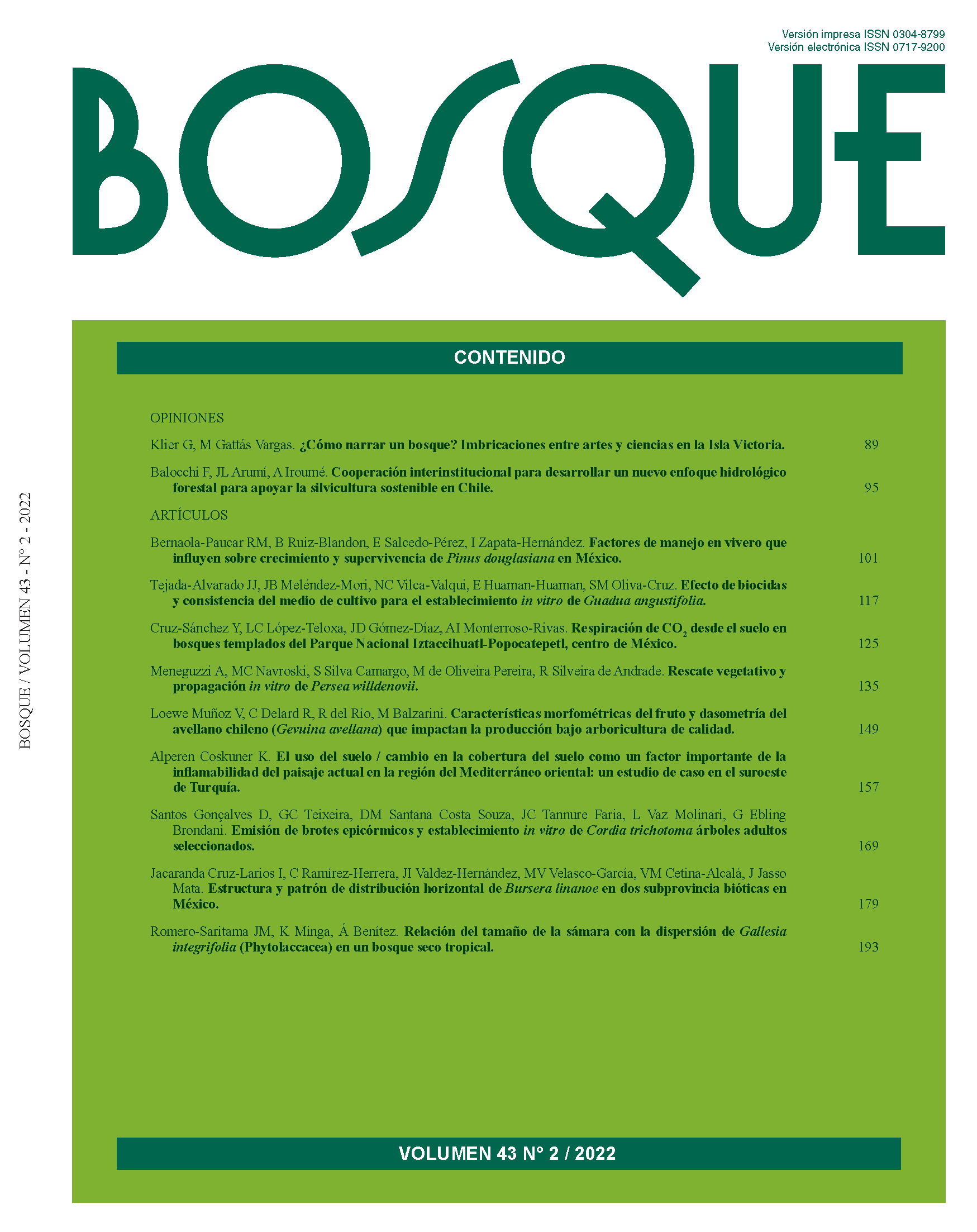Fruit morphometry and dasometry of Gevuina avellana affecting seed production under quality arboriculture
Main Article Content
Abstract
The Chilean hazelnut (Gevuina avellana) produces valuable timber and edible fruit in high demand. However, the development of the crop is scarce in Chile, where the production is usually harvested from native forests. In plantations, quality arboriculture practices are mainly aimed at increasing the value of timber, though their impact on fruiting is unknown. The objective of this work was to evaluate the shape and size of trees in relation to fruit production, and fruit morphometry traits in relation to kernel yield in cultivated trees. A 21-year-old plantation was evaluated, established with plants from two origins in the Araucanía region, managed with quality arboriculture techniques. Dasometric variables, production and morphometry of fruits and kernel yield in relation to the in-shell seed were measured in 1,000 hazelnuts. Differences were found among origins for tree height though none for fruit morphometric variables. On average, 20 kg of seeds were harvested per tree, with a kernel yield of 35 %, varying among seeds from 12 to 74 %. The trees with the highest seed production had diameters over 18.2 cm and balanced shape (H / DBH ratio less than 0.413). The highest kernel yields were obtained in lightweight in-shell seeds (less than 1.33 g) and with lengths under 18.5 mm. Gevuina avellana in managed plantations far exceeds the seed production harvested in native forests, with higher kernel yield in smaller seeds.

